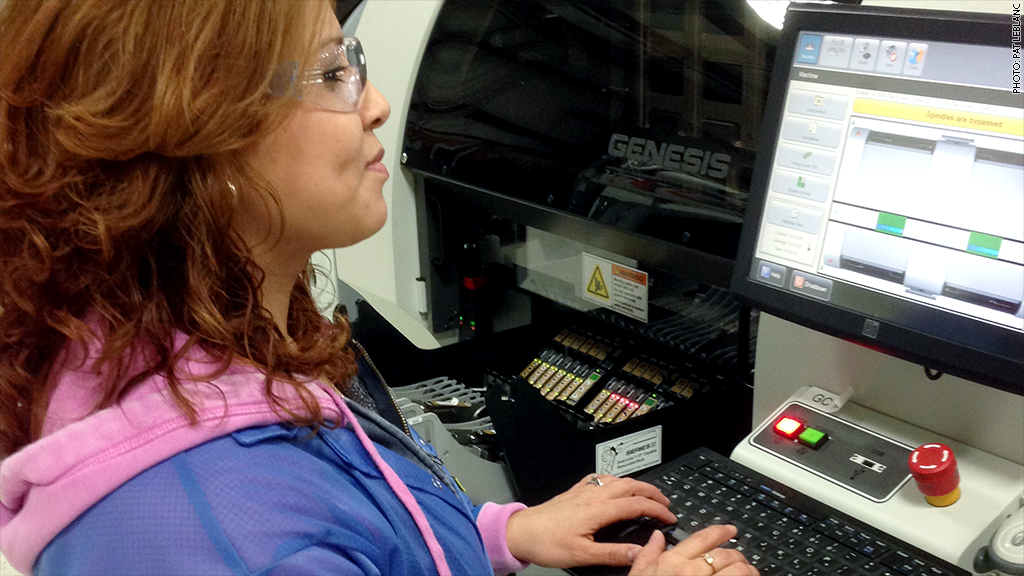
Americans like a comeback, and manufacturing could be next.
Last week, President Obama pledged $140 million in federal funding, combined with another $140 million in private funds, to two new high-tech manufacturing hubs in Detroit and Chicago. They'll bring together private companies, nonprofits and universities to pioneer research for new technology.
The White House implemented two similar hubs in Ohio and North Carolina in 2013, and plans to launch four more this year.
And for the first time since the 1990s, the industry is adding jobs. More than 600,000 jobs have been created in the past four years.
But what's clear is that these are advanced, high-tech jobs that look a lot different than the factories immortalized in films like "Norma Rae."
"The U.S. competitive advantage is clearly not going to be in low-end mass production," said Mark Muro, a senior fellow at the Brookings Institution. "Where cost is the main driver, the U.S. can't be the main player."
Instead, manufacturers that are thriving are in what Muro calls "advanced industries." They spend a lot on research and development, and depend on employees with science, technology and engineering backgrounds.
Related: Furniture making comes back to the South
Michigan's EBW Electronics does just that. In 2010, the company started supplying LED lighting devices to the auto industry. Since then, it has experienced exponential growth.
Vice president Tom Clark said the company's foundation in engineering and experience in fluorescent lighting made for an easy transition.
In the past four years, sales have increased by 900% to $27 million annually, and the company has grown from 30 to 150 employees.
Demand has shot up for LED integration in the auto industry, and EBW Electronics has stepped into supply that need, said chairman Pat LeBlanc.
It's this kind of manufacturing that Obama's initiatives target.
The Detroit hub will focus on products like lightweight metals that can be used in the auto, energy and defense industries, while the Chicago hub will focus on digital manufacturing and design innovation.
Related: Italian gunmaker brings factory jobs to U.S.
San Francisco's Project Frog is another type of new manufacturer that heavily depends on designers, architects and engineers.
In fact, the company doesn't do any of its own manufacturing. Instead, it partners with a number of manufacturers to create pre-made buildings that are cheap, energy-efficient and easy to assemble on site. CEO Ann Hand likens it to Ikea furniture, but the parts make an entire one- or two-story building rather than a nightstand.
The company was founded six years ago to provide buildings that offer better learning environments for students forced to attend class in trailers.
Schools put up a Project Frog building instead of a portable trailer, and Hand's team brings parts from a variety of manufacturers to the job site. The ceilings, for example, are made by a Pennsylvania company called Epic Metals, while LED lighting fixtures and automated shades are supplied by Lutron, also located in Pennsylvania.
Related: Obamacare will raise premiums for 65% of small firms
"Partnering with Project Frog allows us to put our technology in markets like education that are typically very difficult to break into," said Ed Blair, vice president and general manager at Lutron. There are few elementary schools that can fit LED lighting into their budget, he said.
For now, Project Frog offers two products -- one tailored for schools and one for health care facilities. But Hand said she's exploring future products for technology companies and low-income housing.
By the end of 2016, Hand expects to have doubled their employees to 60. Sales tripled to $30 million in 2012.
"Advanced industries are the ones that drive prosperity and have the best shot at surviving," Muro said. "Frankly, manufacturing that's not innovative is likely in danger."







